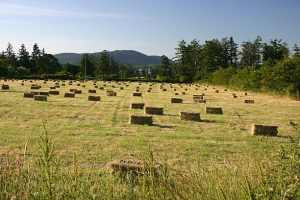Baling twine is the staple material that keeps the hay in the balers. There are many different types of these machines, including those used for newspapers, recyclable materials, and waste materials. The twine used for baling comes in various colours, strengths, and materials. Here are a few tips for using baling string and twine. Consider buying slit-film and round baling twine for a wide range of applications.
 Baling twine comes in orange, black, and blue. It is also available in natural colour. The benefits of this string are as varied as the uses for duct tape. For instance, it can make belts, dog leashes, halters, and tail strings for blankets. It is also used as a pot scouring pad and saddle strings on western saddles. For these reasons, baling twine is a great addition to your farm supplies.
Baling twine comes in orange, black, and blue. It is also available in natural colour. The benefits of this string are as varied as the uses for duct tape. For instance, it can make belts, dog leashes, halters, and tail strings for blankets. It is also used as a pot scouring pad and saddle strings on western saddles. For these reasons, baling twine is a great addition to your farm supplies.
Baling twine is a useful item that has many uses. It can be used to mend fences, reattach tractor parts, and keep a fence steady. Its primary use is for baling, but it can also be used for other purposes. It is typically sold in rolls or spools. There are several types of baling twine, ranging from 95 psi to 325 psi.
Baling twine is made from a variety of natural fibres. It is available in different weights and colours. Despite its primary function, it is incredibly versatile. In addition to being a useful tool, it can be used for a variety of other purposes. Among these uses is for binding fibrous materials, such as bales. There are many different types of twine to choose from, and you can even find a spool that is perfect for your purpose.
Baling twine comes in many colours and weights and is commonly used for several jobs. For example, it can repair fences, reattach tractor parts, and hold down a fence. However, its primary use is for baling. There are a variety of types of twine, including sisal twine. Depending on your preferences, you can pick one that matches your specific needs. For the best quality baling twine package, check out silagewrap.com.au/small-square-baling-twine.
Baling twine is a staple of any farm. It can repair fences, reattach tractor parts, and steady a fence. While the main purpose of baling twine is to tie hay bales, it can also be used for many other tasks. Depending on the type of baling twine, you may want to buy several strands to match your needs. It is best to buy a variety of weights and several different types of material.
Its durability is one of the reasons why baling twine is so versatile. It can be used for many different purposes, including fixing fences, attaching tractor parts, and even making belts. In addition to its primary use, baling twine is also used to make belts, dog leashes, halters, and pot-scouring pads. It is also used to fasten western saddles and is eco-friendly.
The CWC offers a variety of baling twine to fit your needs. Both natural and synthetic twines have the same high-quality and durability. The synthetic baling twine is UV-treated polypropylene that takes 50 years to degrade. The sisal baler is 100 per cent recyclable. The best type of twine for hay is designed for the job and will not tear easily. The key to finding the right one is to choose one that meets your needs.
There are many different uses for baling twine. It can be used as a grab strap for the English saddle and can be tied to the D rings in the front of the saddle. It can also be used as a knife to cut and break the twine. Keeping these in mind will help you save the environment. While you are baling hay, it is also a great way to give the environment a new lease on life.
While plastic twine is widely available, sisal twine is biodegradable and naturally digestible. It will not pollute the soil, and it is the best choice for baling hay. The twine can be tied to the front D rings of the saddle or electric fence posts. It can also be used as a tool for pulling a zipper up. Aside from hay, baling twine can be used for various purposes, including hanging stuff.